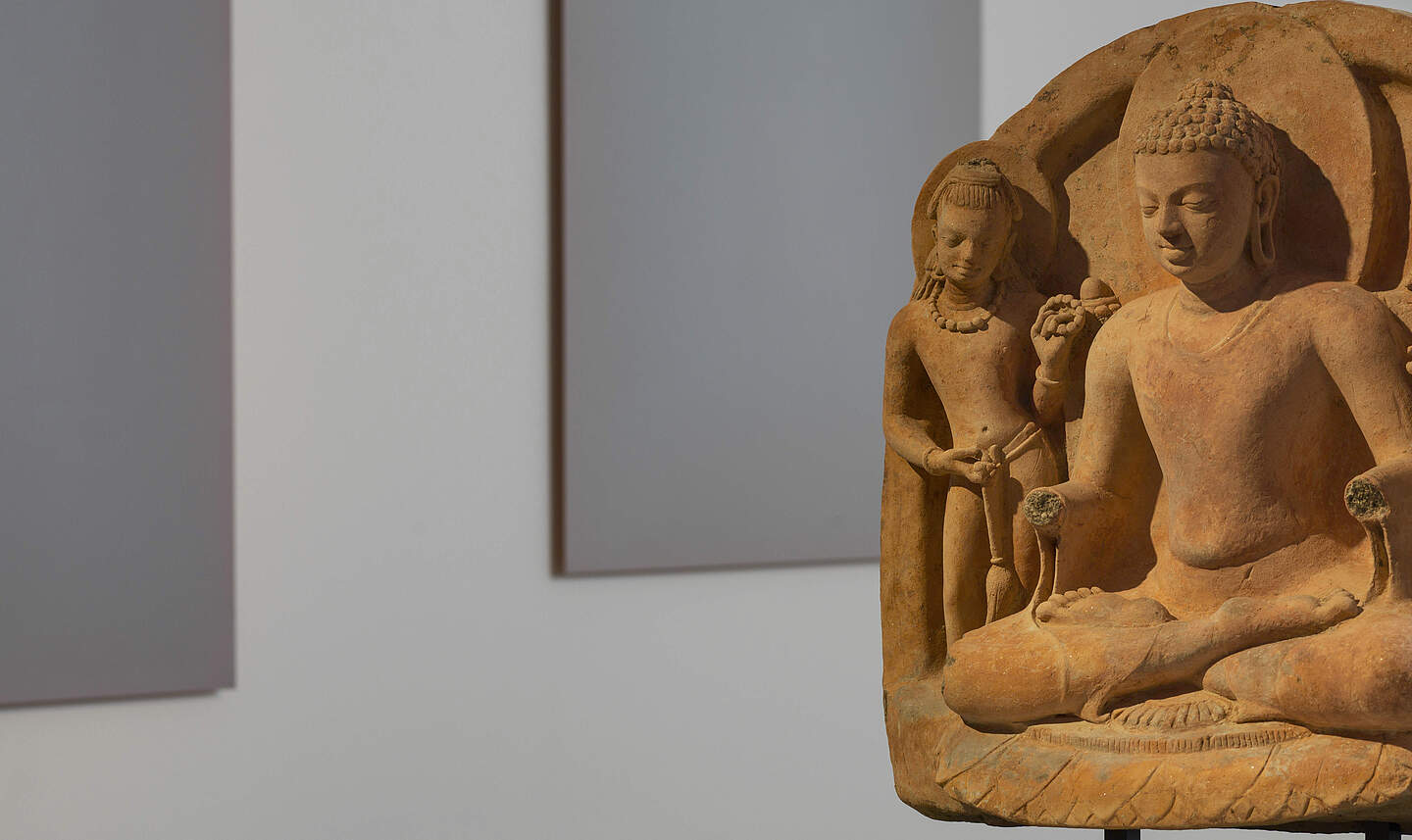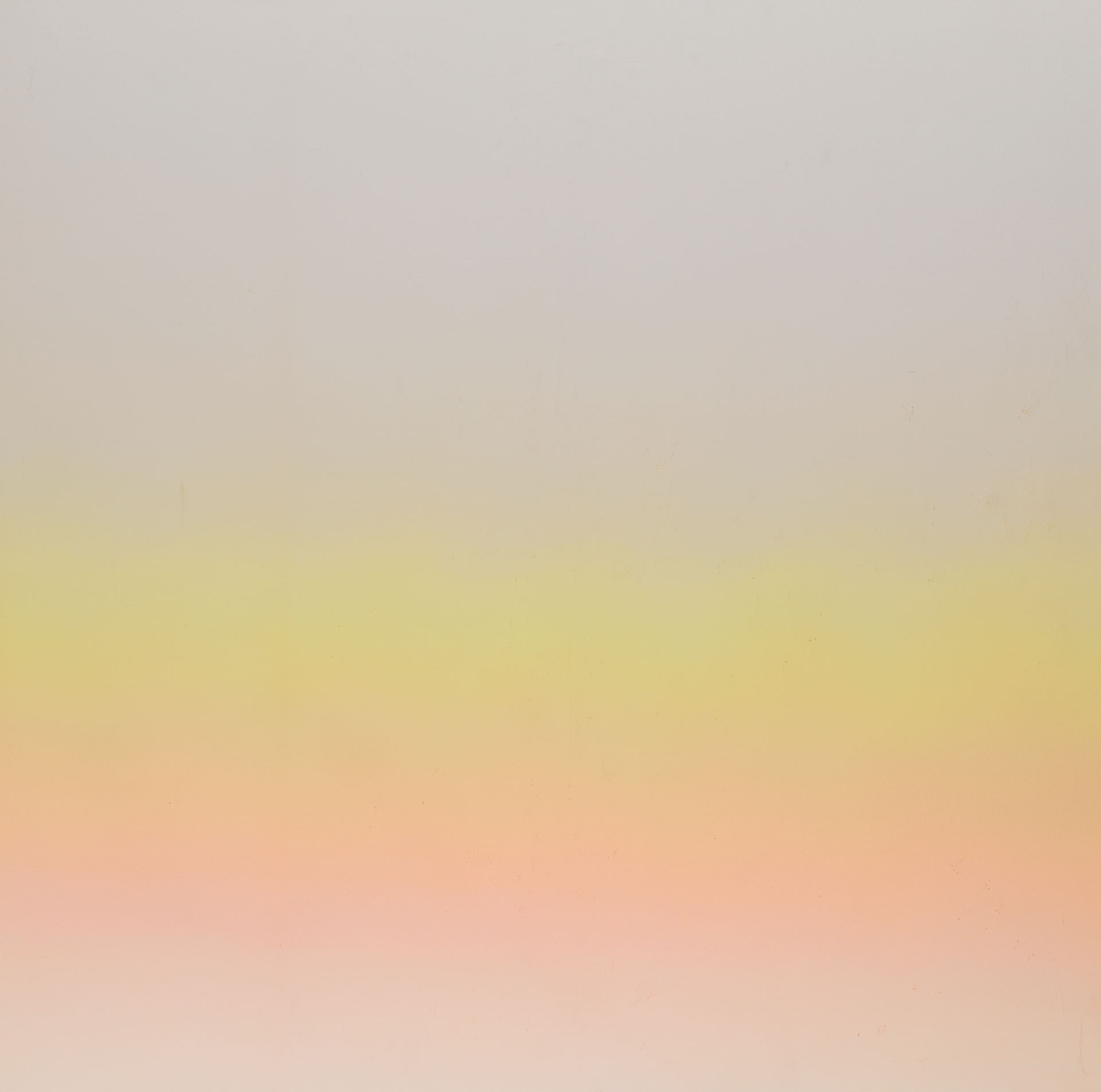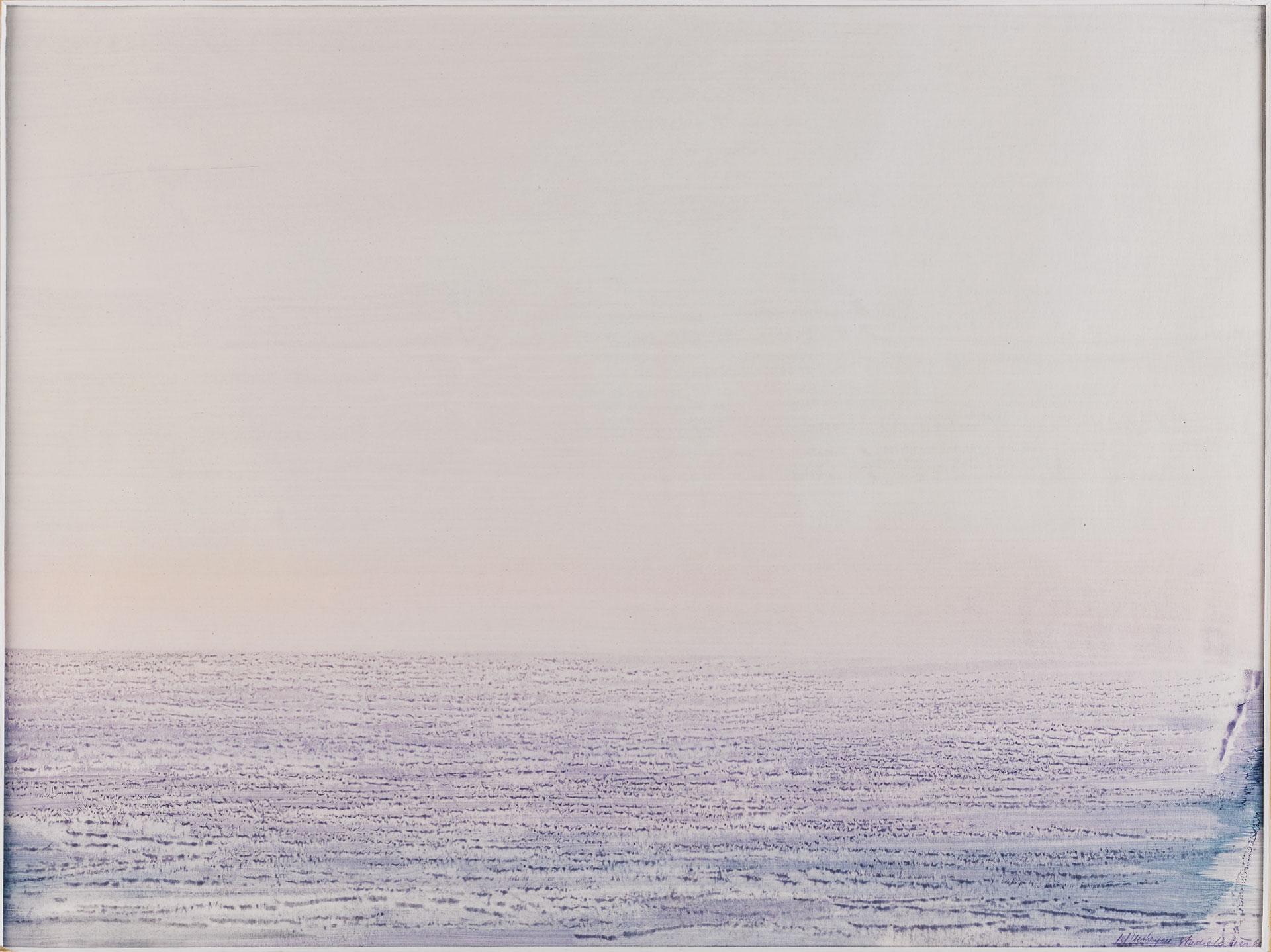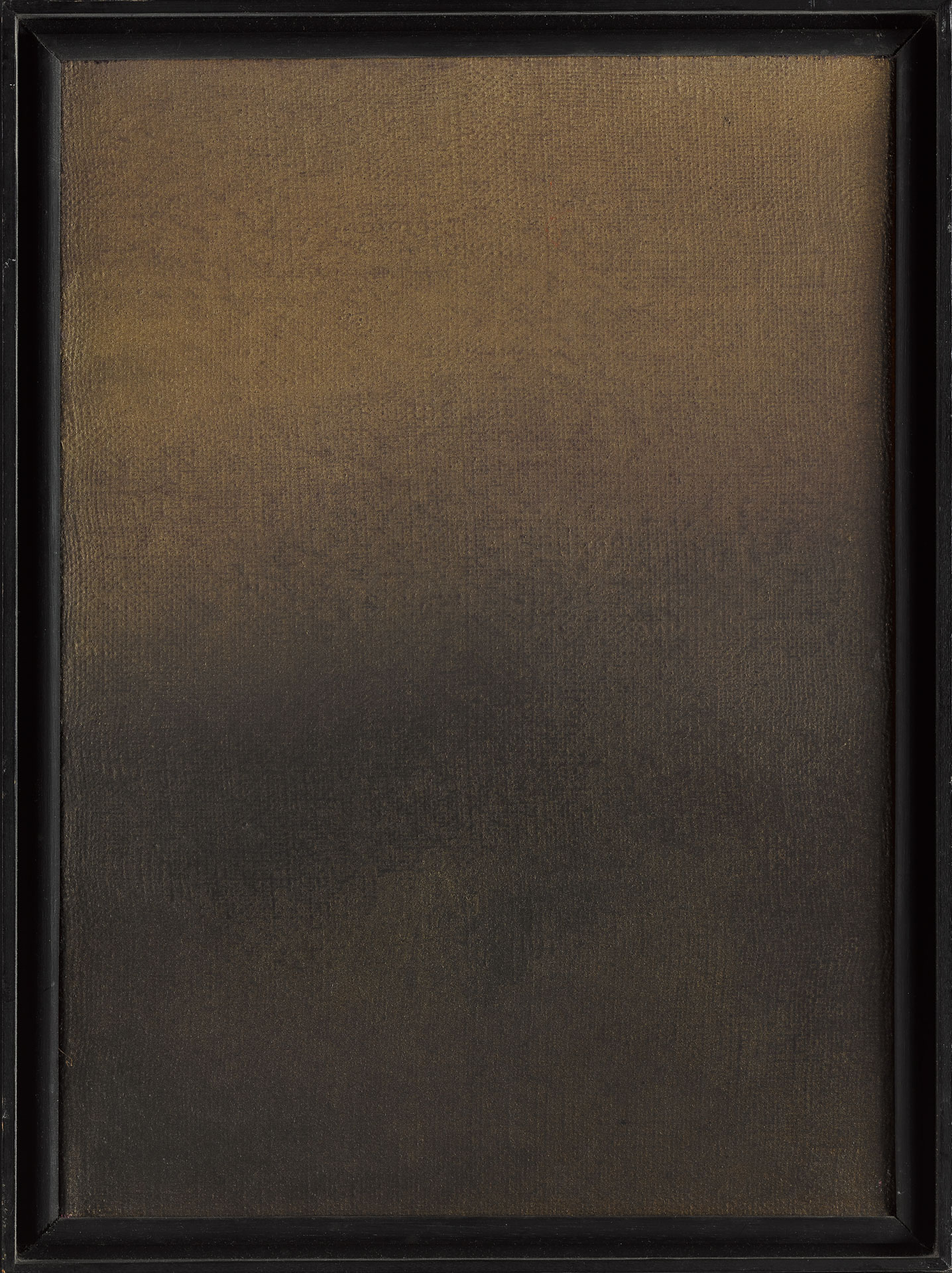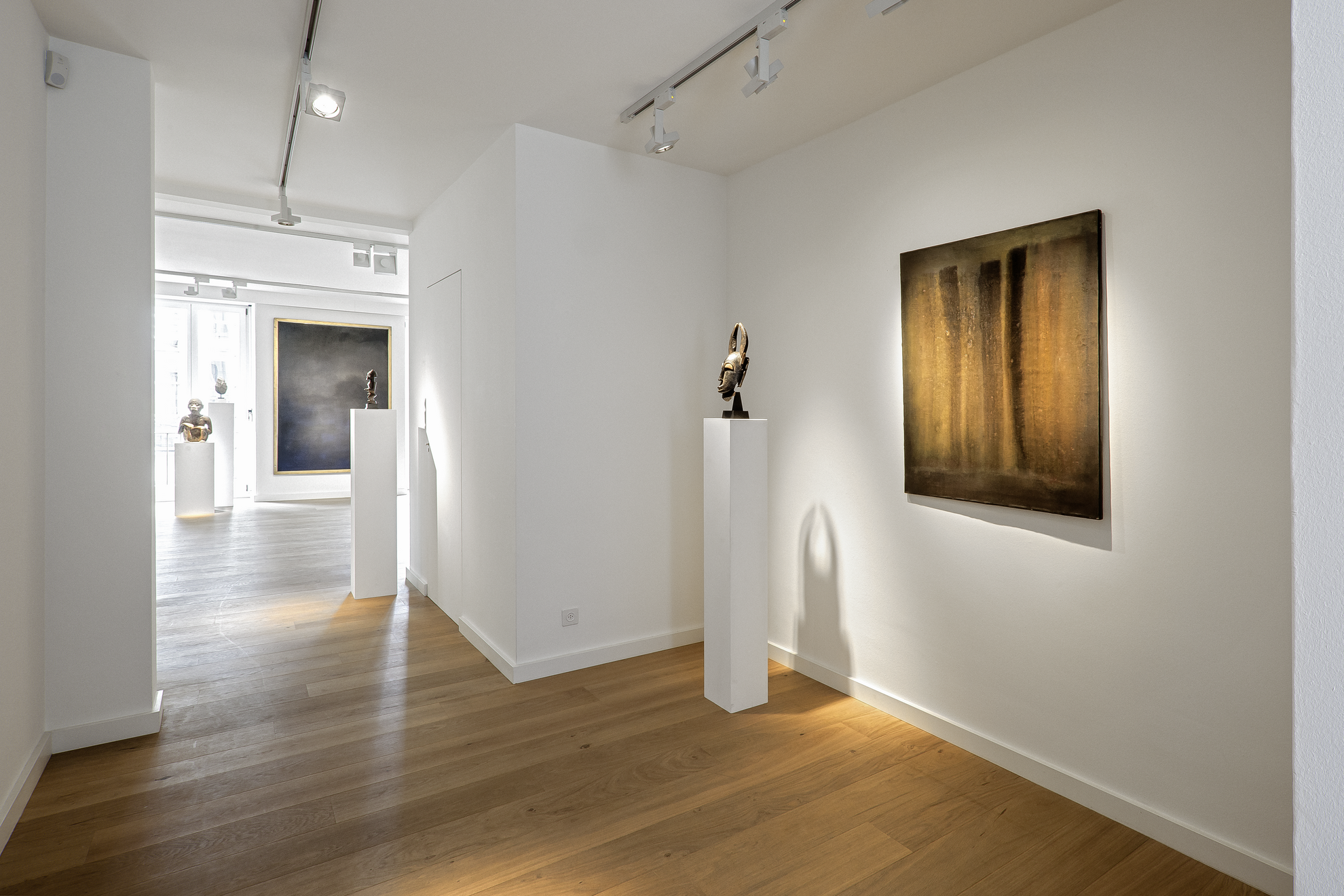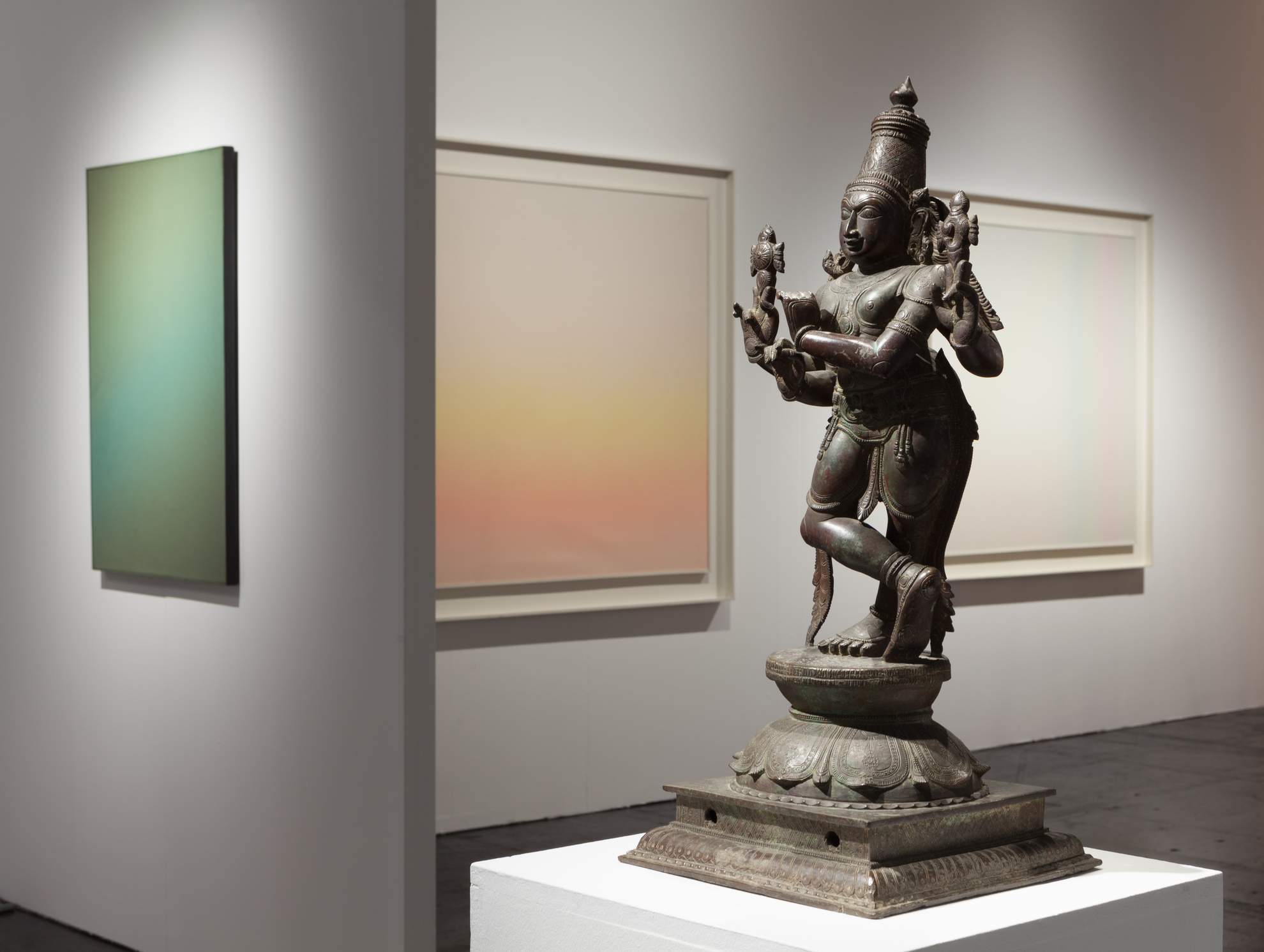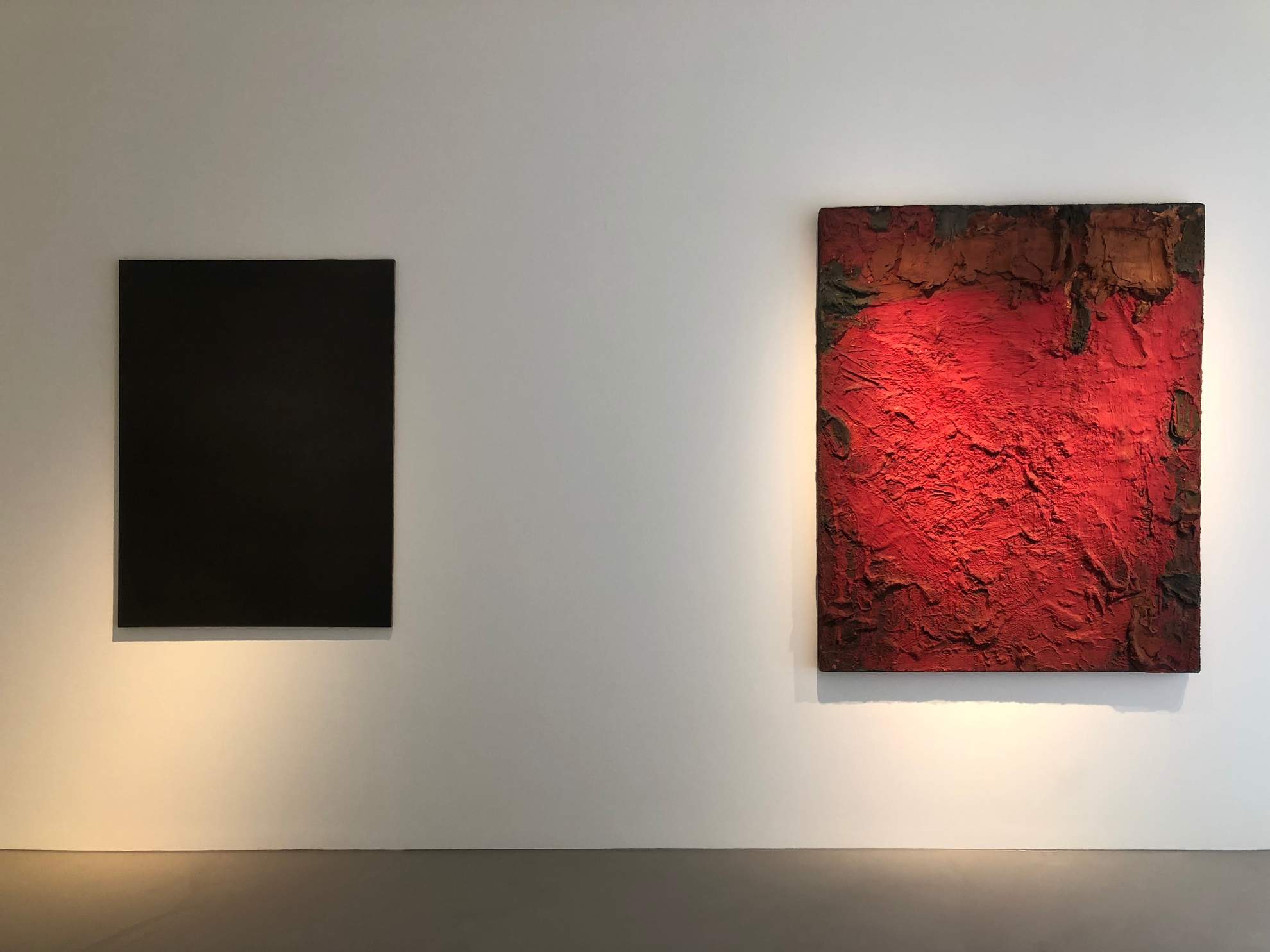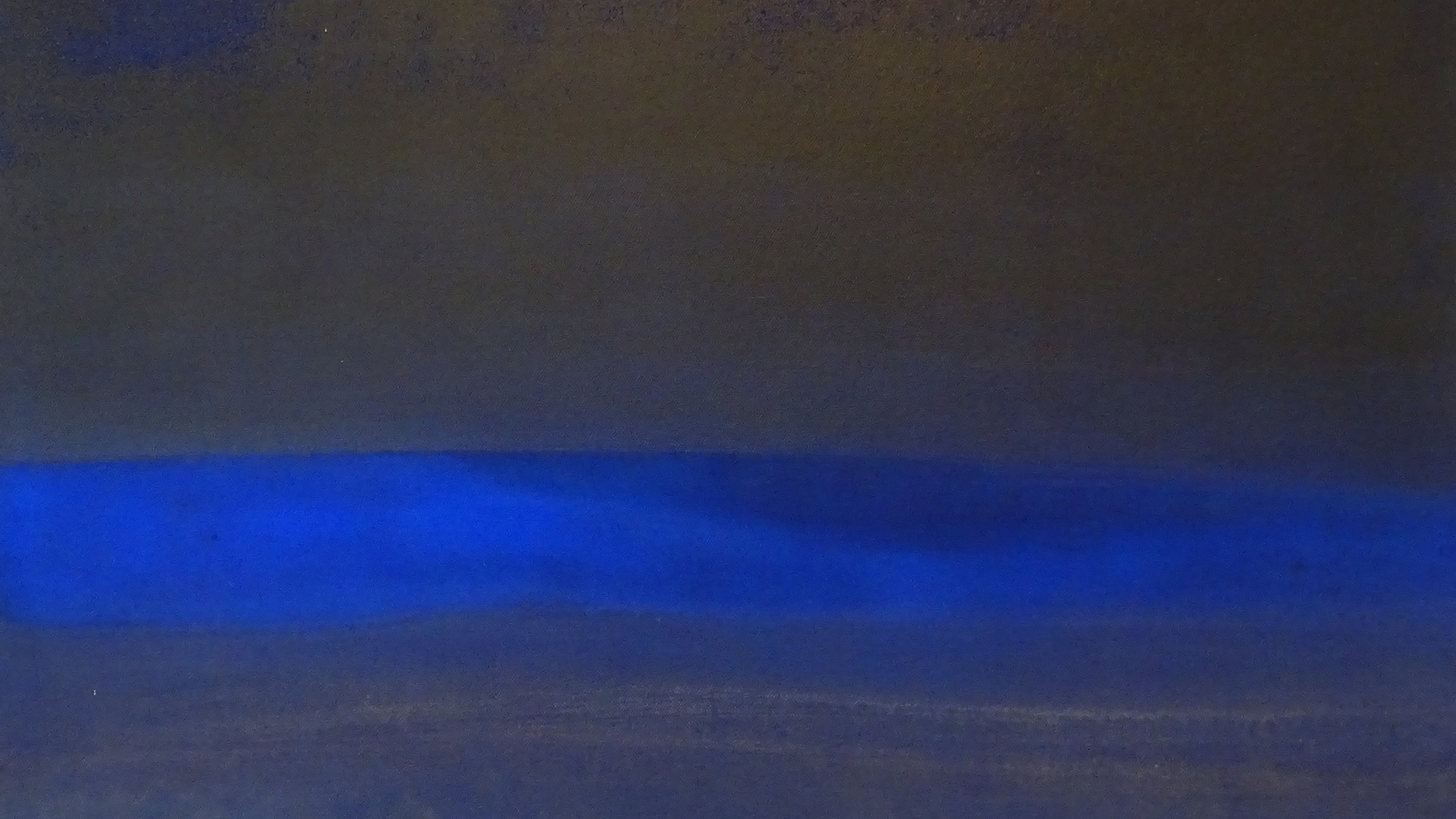
Jef Verheyen
Biography
Finely nuanced and virtually iridescent colour gradients are characteristic of the paintings of Flemish artist Jef Verheyen, born in Itegem/ Belgium in 1932. From 1946 to 1952 he studies at the Royal Academy of Fine Arts, Antwerp. In 1956 the first monochrome black works are created in discourse with Paul Klee. In 1957 Verheyen meets his later friends and artist colleagues Lucio Fontana and Robert Crippa at the Galeria Pater in Milan. In 1958 his first manifesto Essentialism is recognized for the publication in art actuel international (issue 1959 -13) in Lausanne. In the late 50's, Verheyen meets Piero Manzoni and Günther Uecker. He makes contact by letter with Yves Klein and becomes an important link of the ZERO-Group. It is this remarkable post-war movement with which Verheyen identifies as an artist. This leeds to important joint international exhibitions from 1962 on and also to joint works of art (e.g. with Lucio Fontana, Hermann Goepfert or Englebert van Anderlecht). The lively exchange with his artist colleagues is always an important source of inspiration and stimulus for him and his work. In 1974 he moves to the Provence with his wife Dani Francq, his daughter and his two sons. It is necessary for the viewer to look closely and be of an almost meditative state of mind in order to comprehend Verheyen’s paintings in their full depth. The "peintre flamant", who studies and graduates in classical painting at the Royal Academy Antwerp in the beginning of the 1950's, leaves only a relatively small œuvre; he himself calls his paintings "panchromatic works", encompassing all colours. His painting style almost completely annihilates any materiality of colour and brush. The subtle works of art are all the more impressive, as Jef Verheyen is visually impaired due to a congenital eye defect. His constant search for metaphysical insight is the programme, as it is, for those exceptional paintings, created with countless diaphanous coats of paint. They have titles such as Sun or Flemish Landscape. Light and colour as a means of perception, a physical and mental visual experience, are the central elements of his art. By constant experiments Verheyen approaches very similar ideas as the ZERO-Group with artists such as Heinz Mack, Otto Piene and later on Günther Uecker, who work mainly in the Rhineland. Lucio Fontana talks of Verheyen as his father, although he himself is considerably older than his Flemish friend. Apart from his art, he appreciates the intellectual and philosophical ways in which the Belgian artist knows how to put his own work and that of others into words. In 1984 he dies in Apt/Vaucluse en France.
Exhibitions (Selection)
1958 Participation in the exhibition by the avant-garde artist group G58 at the Hessenhuis in Antwerp | 1960 Participation in the exhibition Monochrome Painting at the Städtisches Museum Leverkusen, Morsbroich Palace | 1961 Participation in the exhibition Ad Reinhardt, Francesco Lo Savio, Jef Verheyen at the Städtisches Museum Leverkusen, Morsbroich Palace | 1962 Participation in the exhibition nul at the Stedelijk Museum, Amsterdam. This exhibition triggers an intensification of the joint exhibitions by the ZERO movement Participation in the exhibition ZERO at the Ad Libitum Gallery, Antwerp. Two joint works with Lucio Fontana are created | 1965 Participation in the exhibition Zero Avantgarde at Galeria del Cavallino, Venice / Galeria II Punto, Turin and Studio Fontana, Milan | 1966 Single exhibition at the Palais des Beaux-Arts, Brussels | 1967 Single exhibition Cathedrals of Light at Galerie Carrefour, Brussels Open Air exhibition Vlaamse Landschappen together with Uecker at t’ Kasteelke, Mullem | 1970 Single exhibition Panchromies at Galerie Iris Clert, Paris. Single exhibition Sonnenbogen at Galerie Bernard, Solothurn | 1975 Single exhibition Lux est Lex at the Abbaye Saint-Michel de Frigolet, Tarascon / Galerie Media, Neuchâtel | 1979 Participation in the exhibition ZERO. Presentation of paintings by a European avant-garde 1958-1964 at Kunsthaus Zürich | 1987 Group exhibition Goepfert and ZERO – ZERO and Goepfert at Frankfurter Kunstverein, Frankfurt am Main | 1988 Group exhibition Zero, Vision and Movement, works from the Lenz Schönberg collection, Städtische Galerie at the Lenbachhaus, München | 1994 Single exhibition Retrospective Jef Verheyen, 1932 – 1984 at the PMMK Museum für Moderne Kunst, Ostend / Josef Albers Museum Quadrat Bottrop | 1997 Single exhibition Jef Verheyen at Galerie Schoeller, Düsseldorf | 2004 Single exhibition Lux est Lex at Galerie Axel Vervoordt Kanaal Antwerp | 2010 Exhibition Jef Verheyen. “Le Peintre Flamant“ and friends at the Langen Foundation, Neuss | 2014 Single exhibition, Jef Verheyen. Color, Light & Vision. Works from the 50ies and 60ies, Galerie Dierking am Paradeplatz, Zurich/ Cologne | 2016 Dialogue with Light - Jef Verheyen - Walter Leblanc, Museé d’Ixelles, Brussels | 2017 Le socle du monde Biennale, Herning Museum of Contemporary Art, Denmark | 2018 Belgian Avantgarde 1960's / 70's - Part I, Dierking, Zurich | 2021 Group show Jef Verheyen 1955-1962, Axel Vervoordt Gallery, Belgium / Group show Sign 0’ the Times - Lucio Fontana, Hermann Goepfert, Jef Verheyen, Dierking, Zurich / Group Exhibition From Coal to Art, Mu.ZEE, Ostend, Belgium / Group Exhibition Collection presentation - Fashion from the MoMu Collection, MoMu, Antwerp, Belgium / Group Exhibition The discovery of the present, Singer Laren, Laren, Netherlands / Het Noordbrabants Museum, ‘s-Hertogenbosch, Netherlands | 2022 Group Exhibition Concrete! Homage to Ulrich Schumacher - The collection of the Josef Albers Museum, Quadrat Bottop, Emil Schumacher Museum, Hagen, Germany / Group Exhibition Far from the void. ZERO and postwar art in Europe, Institut Valencià d’Art Modern (IVAM), Valencia, Spain / Group Exhibition Epoch ZERO. The Lenz Schönberg Collection as a guest, Kunstmuseum Ahlen, Ahlen, Germany / Group Exhibition Godless, Masterless, Kingless and Rightsless, Verbeke Foundation, Kemzeke, Belgium | 2023 Group Exhibition A Touch of Light, Museum Kranenburgh, Bergen, Netherlands | 2024 Group Exhibition: Private Passion X Public Duty. Hoet & Matthys-Collection: Through Collectors’ Eyes, Stedelijk Museum voor Actuele Kunst (S.M.A.K.), Ghent, Belgium / Group Exhibition Full House, Mu.ZEE, Ostend, Belgium / Jef Verheyen. Window on Infinity, Koninklijk Museum voor Schone Kunsten Antwerpen (KMSKA), in cooperation with Museum van Hedendaagse Kunst Antwerpen (MHKA), Museum van Hedendaagse Kunst Antwerpen, Belgium / against the sky. Contre le ciel. Jef Verheyen / Johanna von Monkiewitsch, Museum Morsbroich, Leverkusen, Germany.
Jef Verheyen
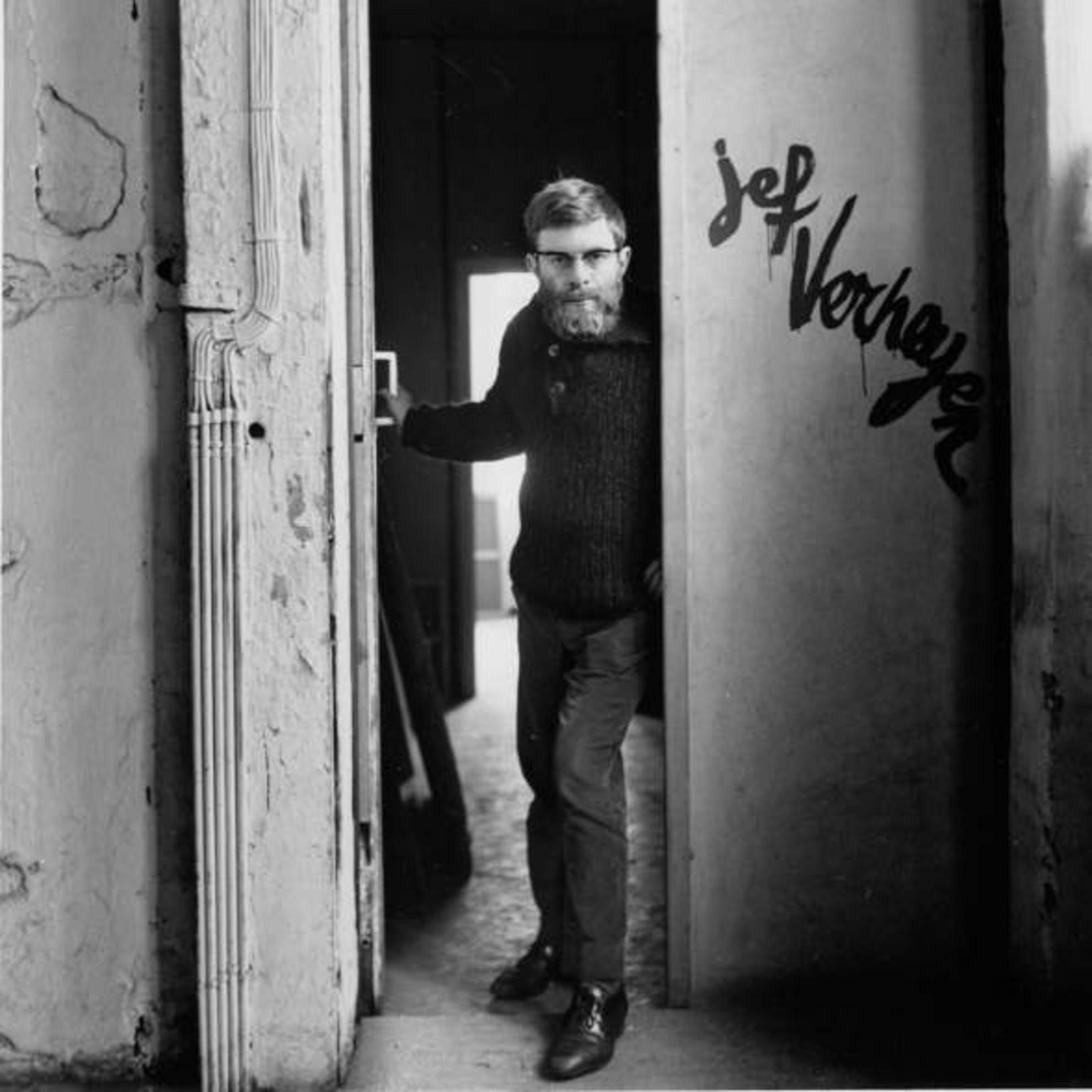
Biography
Finely nuanced and virtually iridescent colour gradients are characteristic of the paintings of Flemish artist Jef Verheyen, born in Itegem/ Belgium in 1932. From 1946 to 1952 he studies at the Royal Academy of Fine Arts, Antwerp. In 1956 the first monochrome black works are created in discourse with Paul Klee. In 1957 Verheyen meets his later friends and artist colleagues Lucio Fontana and Robert Crippa at the Galeria Pater in Milan. In 1958 his first manifesto Essentialism is recognized for the publication in art actuel international (issue 1959 -13) in Lausanne. In the late 50's, Verheyen meets Piero Manzoni and Günther Uecker. He makes contact by letter with Yves Klein and becomes an important link of the ZERO-Group. It is this remarkable post-war movement with which Verheyen identifies as an artist. This leeds to important joint international exhibitions from 1962 on and also to joint works of art (e.g. with Lucio Fontana, Hermann Goepfert or Englebert van Anderlecht). The lively exchange with his artist colleagues is always an important source of inspiration and stimulus for him and his work. In 1974 he moves to the Provence with his wife Dani Francq, his daughter and his two sons. It is necessary for the viewer to look closely and be of an almost meditative state of mind in order to comprehend Verheyen’s paintings in their full depth. The "peintre flamant", who studies and graduates in classical painting at the Royal Academy Antwerp in the beginning of the 1950's, leaves only a relatively small œuvre; he himself calls his paintings "panchromatic works", encompassing all colours. His painting style almost completely annihilates any materiality of colour and brush. The subtle works of art are all the more impressive, as Jef Verheyen is visually impaired due to a congenital eye defect. His constant search for metaphysical insight is the programme, as it is, for those exceptional paintings, created with countless diaphanous coats of paint. They have titles such as Sun or Flemish Landscape. Light and colour as a means of perception, a physical and mental visual experience, are the central elements of his art. By constant experiments Verheyen approaches very similar ideas as the ZERO-Group with artists such as Heinz Mack, Otto Piene and later on Günther Uecker, who work mainly in the Rhineland. Lucio Fontana talks of Verheyen as his father, although he himself is considerably older than his Flemish friend. Apart from his art, he appreciates the intellectual and philosophical ways in which the Belgian artist knows how to put his own work and that of others into words. In 1984 he dies in Apt/Vaucluse en France.
Exhibitions (Selection)
1958 Participation in the exhibition by the avant-garde artist group G58 at the Hessenhuis in Antwerp | 1960 Participation in the exhibition Monochrome Painting at the Städtisches Museum Leverkusen, Morsbroich Palace | 1961 Participation in the exhibition Ad Reinhardt, Francesco Lo Savio, Jef Verheyen at the Städtisches Museum Leverkusen, Morsbroich Palace | 1962 Participation in the exhibition nul at the Stedelijk Museum, Amsterdam. This exhibition triggers an intensification of the joint exhibitions by the ZERO movement Participation in the exhibition ZERO at the Ad Libitum Gallery, Antwerp. Two joint works with Lucio Fontana are created | 1965 Participation in the exhibition Zero Avantgarde at Galeria del Cavallino, Venice / Galeria II Punto, Turin and Studio Fontana, Milan | 1966 Single exhibition at the Palais des Beaux-Arts, Brussels | 1967 Single exhibition Cathedrals of Light at Galerie Carrefour, Brussels Open Air exhibition Vlaamse Landschappen together with Uecker at t’ Kasteelke, Mullem | 1970 Single exhibition Panchromies at Galerie Iris Clert, Paris. Single exhibition Sonnenbogen at Galerie Bernard, Solothurn | 1975 Single exhibition Lux est Lex at the Abbaye Saint-Michel de Frigolet, Tarascon / Galerie Media, Neuchâtel | 1979 Participation in the exhibition ZERO. Presentation of paintings by a European avant-garde 1958-1964 at Kunsthaus Zürich | 1987 Group exhibition Goepfert and ZERO – ZERO and Goepfert at Frankfurter Kunstverein, Frankfurt am Main | 1988 Group exhibition Zero, Vision and Movement, works from the Lenz Schönberg collection, Städtische Galerie at the Lenbachhaus, München | 1994 Single exhibition Retrospective Jef Verheyen, 1932 – 1984 at the PMMK Museum für Moderne Kunst, Ostend / Josef Albers Museum Quadrat Bottrop | 1997 Single exhibition Jef Verheyen at Galerie Schoeller, Düsseldorf | 2004 Single exhibition Lux est Lex at Galerie Axel Vervoordt Kanaal Antwerp | 2010 Exhibition Jef Verheyen. “Le Peintre Flamant“ and friends at the Langen Foundation, Neuss | 2014 Single exhibition, Jef Verheyen. Color, Light & Vision. Works from the 50ies and 60ies, Galerie Dierking am Paradeplatz, Zurich/ Cologne | 2016 Dialogue with Light - Jef Verheyen - Walter Leblanc, Museé d’Ixelles, Brussels | 2017 Le socle du monde Biennale, Herning Museum of Contemporary Art, Denmark | 2018 Belgian Avantgarde 1960's / 70's - Part I, Dierking, Zurich | 2021 Group show Jef Verheyen 1955-1962, Axel Vervoordt Gallery, Belgium / Group show Sign 0’ the Times - Lucio Fontana, Hermann Goepfert, Jef Verheyen, Dierking, Zurich / Group Exhibition From Coal to Art, Mu.ZEE, Ostend, Belgium / Group Exhibition Collection presentation - Fashion from the MoMu Collection, MoMu, Antwerp, Belgium / Group Exhibition The discovery of the present, Singer Laren, Laren, Netherlands / Het Noordbrabants Museum, ‘s-Hertogenbosch, Netherlands | 2022 Group Exhibition Concrete! Homage to Ulrich Schumacher - The collection of the Josef Albers Museum, Quadrat Bottop, Emil Schumacher Museum, Hagen, Germany / Group Exhibition Far from the void. ZERO and postwar art in Europe, Institut Valencià d’Art Modern (IVAM), Valencia, Spain / Group Exhibition Epoch ZERO. The Lenz Schönberg Collection as a guest, Kunstmuseum Ahlen, Ahlen, Germany / Group Exhibition Godless, Masterless, Kingless and Rightsless, Verbeke Foundation, Kemzeke, Belgium | 2023 Group Exhibition A Touch of Light, Museum Kranenburgh, Bergen, Netherlands | 2024 Group Exhibition: Private Passion X Public Duty. Hoet & Matthys-Collection: Through Collectors’ Eyes, Stedelijk Museum voor Actuele Kunst (S.M.A.K.), Ghent, Belgium / Group Exhibition Full House, Mu.ZEE, Ostend, Belgium / Jef Verheyen. Window on Infinity, Koninklijk Museum voor Schone Kunsten Antwerpen (KMSKA), in cooperation with Museum van Hedendaagse Kunst Antwerpen (MHKA), Museum van Hedendaagse Kunst Antwerpen, Belgium / against the sky. Contre le ciel. Jef Verheyen / Johanna von Monkiewitsch, Museum Morsbroich, Leverkusen, Germany.
IMPRINT
© DIERKING 2025
